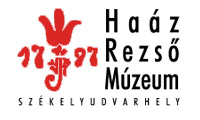Kovács Petronella (szerk.): Isis - Erdélyi magyar restaurátor füzetek 10. (Székelyudvarhely, 2010)
B. Perjés Judit - Domokos Levente - Puskás Katalin: Tíz nap a "Nagy-Küküllő felső folyása mentén" avagy hazi és vendég restaurátorok a székelykeresztúri Molnár István Múzeum születő állandó kiállításán
the anode influences the degree of the metal deposition so it seems practical to start the galvanoplastic work from the deepest point of the negative at objects in the round, which often contain deep areas. In this case the conductive wire is pierced across the negative instead of being coiled around it. An interior anode can also be applied at very deep and complex forms. To remove the excess from objects in the round, the surfaces to the soldered are first coated with lead-tin, and then they are fit exactly together and temporarily fixed with wires, tongues etc. In the next step, they are soldered together at a few dots and the temporary fixing is removed. If the permanent soldering is made with a soldering iron instead of a flame, the fixing dots will not smelt. After the finishing of the soldering seams, the object is cleaned and coated with copper or electroplated with precious metal. The preparation of duplicates from objects in the round is illustrated by preparing duplicates of a Lar and an Apollo statue. Galvanoplasty can also be used for the completion of objects. In this case, the missing area is moulded from e.g. plasticine with leaving small rims along the edges to be fit together, then a silicon negative is made of it. The galvanoplastic completion is glued into the original object with this small rim. The rim prevents that the two different metals touch. The author cites the jug of the Roman period cart find of Szomor-Somodorpuszta as an example. A thicker than average galvanoplastic completion had to be prepared since it had to bear the load of the heavy, cast bronze neck and the handle. A helmet was completed with the same method. The author mentions that experiments were made for the direct completion of bronze objects, e.g. a cantharos, with galvanoplasty in the Hungarian National Museum in the 1960’s in a way that a wax negative was placed inside the object at the missing area and the cantharos was isolated with wax. The mould was rendered conductive; the object itself conducted the electricity. The copper settled in the completion yet it did not get bound to the original. It could not be desoldered, it remained rigid, quickly broke out: the experiment was unsuccessful. Nowadays, fragmentary objects are generally not completed: they are cleaned and conserved and a completed copy is made of them. So the preparation of duplicates and galvanoplasty play an increasingly important role in conservation. Katalin T. Bruder Conservator of archaeological and applied art objects Budapest Phone: +36-1-353-3608, +36-30-242-3221 Gábor Séd Local galvanotechnical solutions in conservation Galvanic baths, electrochemical solutions necessitating immersing have been used since the early 20th century. Local galvanotechnics started to spread in object conservation in the 1970’s following industrial application and making use of its experiences. The need of local solutions emerged because during immersing, the entire surface of the object was affected by the solution, which could cause permanent damages on the surfaces that were not meant to be treated. Local electrochemical solutions have been used in Hungarian conservation practice since 1974. First “Galvan electric” guns were used, which touch the object through a tampon. They can be used first of all for the precipitation of metals on surfaces, but due to the disintegration of the tampon, not during the cleaning phase. Both art object conservation and industry needed a solution that could be used locally without immersing in the cleaning phase and for surface treatment and ornamental purposes. This is why in 1983 Dr Oszkár Pavlik from the Hungarian Academy of Sciences and the author, independent of each other, introduced to conservators an instrument made of marker pens rendered conducted with pulling a metal wire through it, which could be used on small surfaces. In 1990, Hungarian conservators started to use the so-called Selectron Process developed by the Selectrons Ltd. It was a mobile system suitable for applying metal on metal. The negative wire, the cathode of the direct current power supply is connected to the object. The other wire is linked to a mobile anode, a writing instrument fashioned to touch the surface to be treated - a pencil, a pen, a tampon etc. It can be flat, elongated, convex or round as the surface needs it. The positive anode is covered with an absorbent material, and it is saturated with a metalcontaining electrolyte solution. The tool connected to the electric current is passed over the territory on which the metal is to be applied. A microprocessor regulates the precipitation speed and the thickness of the coating. The DC current powers, the microprocessors and all the supplements are produced by the SIFCO Industries Inc. and its European branches. The author illustrates the broad opportunities of its application by his experiences and the work done by the students of conservation of applied art objects of the Hungarian University of Fine Arts. 1. The author first used the method at the conservation of two so-called bureau statues from a private collection. They were made of zinc and patinated to a bronze colour. The task was to stop the deformations caused by corrosion and to restore the aesthetic appearance of the surfaces. The cleaning of the surfaces and the filling in of the cavities was made with a founding mixture of a low melting point, while local electroplating was used for restoring the copper coating and the patina. 2. The stains caused by copper corrosion in the 18th century butchers’ guild plate painted on a copper plate preserved in the collection of the Hungarian 194
